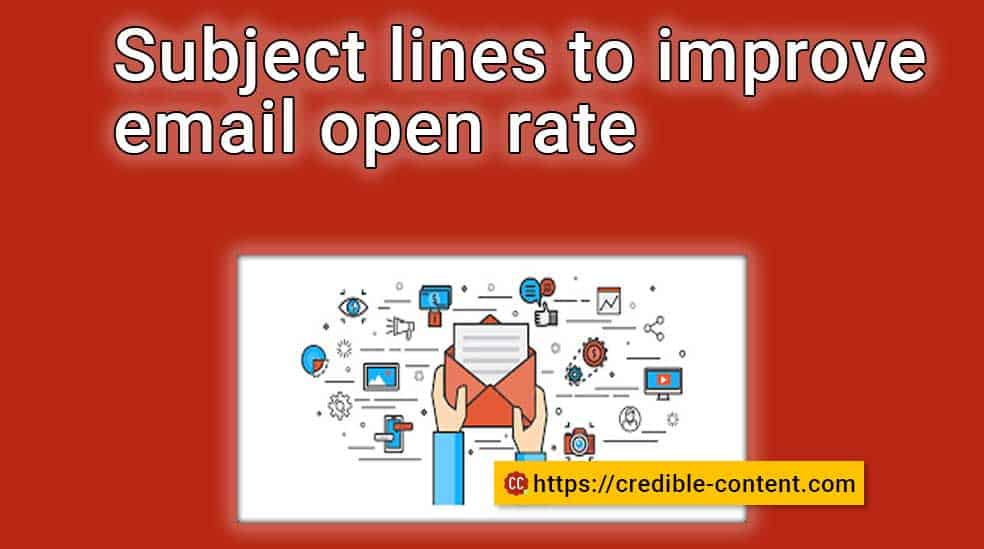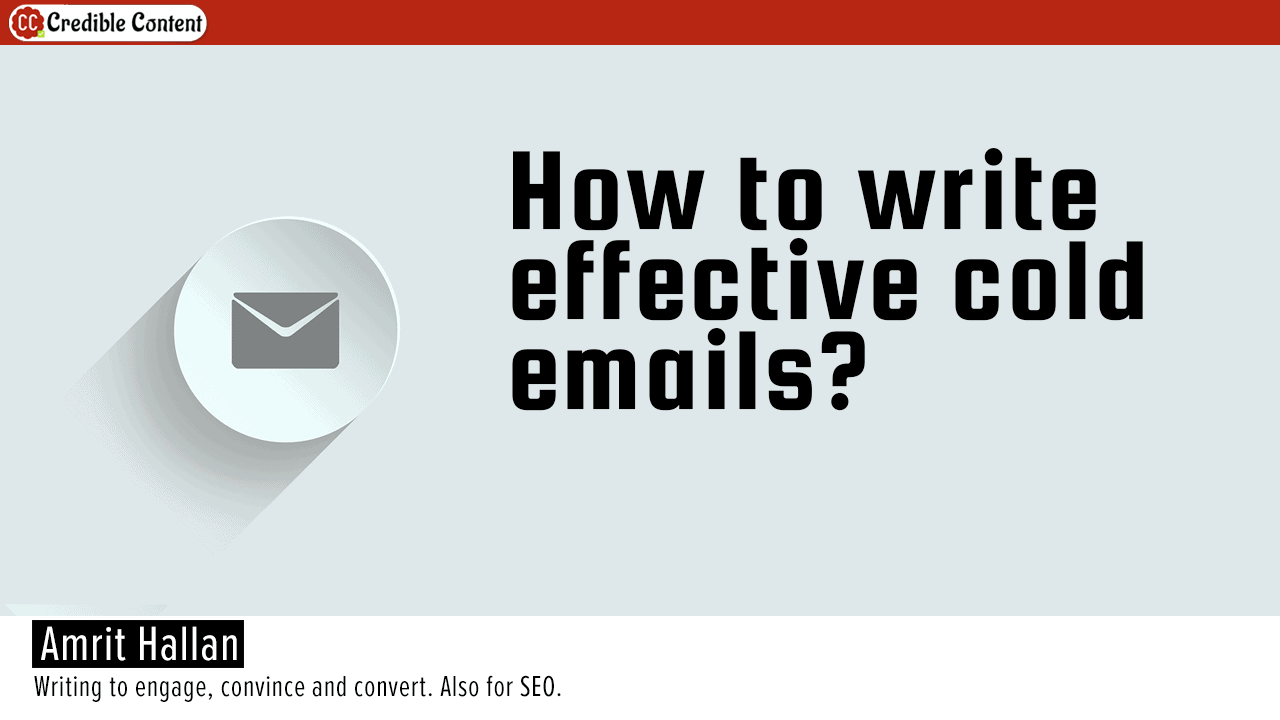
Subject lines to improve email open rate.
According to this GetResponse report that was published in 2019, the global email opening rate in 2019 was somewhere around 22.15%.
Considering that the global email opening date in 2018 was around 24%, the number of emails people open has been steadily going down.
Let’s assume that in 2020, the email opening rate is 20%.
The ever reliable Statista tells us that more than 3 billion emails are being sent per day. What’s 20% of 3 billion?
600 million.
How many emails are not being opened?
2400 million
Even if you say that 90% of the 3 billion emails might be spam, still, you get a big number of emails that remain unopened.
Why should you bother about how many people are opening your email messages?
Suppose you’re sending out a business proposal through email to a group of people?
Recently I wrote for a company that was offering its line of products to retail stores.
They were sending out the message to 600 big and small retail stores.
Along with the body text of the message I gave them more than 10 subject line options to choose from.
When you send out such messages, it is very important that you use a subject line that makes people open your message.
Take the example of your own inbox.
Do you open all your email messages?
No.
Do people/businesses who are sending you all those messages you are not opening want you to ignore their messages?
No.
You still do, right?
One of the biggest reasons why people don’t open your emails is a subject line, or rather, the absence of a convincing subject line.
Take your own example again: unless the email is from your spouse, work, your kid or from one of those kinky websites you may have subscribed to, what makes you open an email message?
Actually, there are 2 things that make you open an email message:
- The “from” name or the sender’s name.
- The subject of the email.
As mentioned above, if the “from” name is not from someone you personally know or with someone you’re doing some sort of business, it is mostly the subject of the email that makes you open it.
Hence, if you’re sending out a cold email (the recipient is not expecting to receive the message from you) or an email marketing campaign, 50% success of your email depends on whether the recipients will open it or not.
Isn’t it logical? If they don’t open your message, how are they going to read it, and if they don’t read it, how will they respond?
Therefore, if you use an email marketing service that provides you some sort of insights, it definitely tells you how many people opened your emails, among the mailing list you have got.
Also, be mindful of your email being marked as spam due to your subject line.
There are many email services like Gmail that keep a close watch on what words you have used in your subject line and if they find suspicious words, they mark your message as spam and it never reaches your recipient’s inbox.
Here are a few ways to write email subject lines that will make more people open your messages.
1. Choose your targets carefully
If you’re sending your email messages to people who may never be interested in your proposal or may never empathize with your cause, they are not going to open your messages, no matter what subject line you use.
Before beginning to brainstorm on what subject line you should choose, make sure that you are about to send your email to the right recipient/recipients.
2. Let it be known what is inside
There is something compelling in your message that you want your recipient to read, right?
Mention that.
Example: 24 hours till you can save 50% on your favorite stationery.
What does it tell the recipient?
It is an email from the place she buys her stationery from.
There is a 50% discount.
The 50% discount is available till the next 24 hours so she must hurry.
Example: The handmade bags you would like to show off.
The recipient knows that the email offers to sell or promote handmade bags.
They must also be pretty good looking that’s why they are worthy of being shown off.
3. Create a short email subject line
Preferably, not more than 60 characters.
This is because many people check their email on their mobile phones these days and longer subject lines are truncated.
Whatever you want to convey, convey it with minimum number of words.
Example: The best tips on writing well.
Example: The sizzling summer collection.
Writing very short email subject lines is not a hard and fast rule.
Sometimes you can also use longer subject lines based on your needs.
4. Mention important words in the beginning of the subject line
Example: Lose weight in 2 weeks.
The person who wants to lose weight instantly sees the phrase “lose weight” and hence, opens your message.
Also, as I have mentioned above, many people will be opening your email on their mobile phones where subject lines are often truncated.
It is better to mention the important stuff in the beginning itself.
Example: 20 minute meal delivery at your doorstep.
5. Use numbers in the email subject lines
Numbers are always reassuring.
Take the example in the above point: 20 minute meal delivery at your doorstep.
Isn’t it better than something like “Very fast meal delivery at your doorstep” or even “Fastest meal delivery at your doorstep”?
When you say “20 minute” the recipient knows exactly how much time it is going to take.
There is no guesswork.
Another example: The top 10 funniest videos you don’t want to miss.
Example: 3 writing tips you can immediately start using.
6. Use personalization in the subject line
Personalization doesn’t mean using the name of the recipient although, in some email messages you may find your name in the subject line.
Personalization means knowing something about the recipient and then mentioning that in the subject line.
Example: Not happy with your gym classes? We are offering a one-week FREE trial.
Example: Enjoyed the dinner you ordered last night? Here are some more mouthwatering offers.
In the first example, you know that the recipient attends a gym.
In the 2nd example, you know that the recipient ordered dinner last night.
A quick note: the above examples are a bit longer, but sometimes, you can also experiment with longer subject lines.
7. Use emotions in your email subject line
You should play with emotions carefully but you can use them to great effect.
Emotions can cater to greed or vanity or regret or any other pain point.
Example: Make your entire neighborhood jealous this new year eve.
Example: Don’t open this email, and then carry the regret your whole life.
Example: Here is an offer you’ve always been waiting for.
You can also make an irresistible offer for better emotional impact…
Example: Open this email and you may be heading for a beach holiday.
Another example I came across once: A lazy man’s way to losing weight fast.
These tips will surely help you write better subject lines that will make people open your email messages.
Just make sure that you don’t make false promises.
Yes, you want people to open your email messages, but you don’t want to make them feel hoodwinked.
This is a sure shot way of getting your message, and all your subsequent messages, consigned to the spam folder.
When I’m writing subject lines for email marketing campaigns of my clients, I try to capture the entire essence of the offer, in as little words as possible, as compellingly as possible, without making a single false promise (as per my knowledge).



